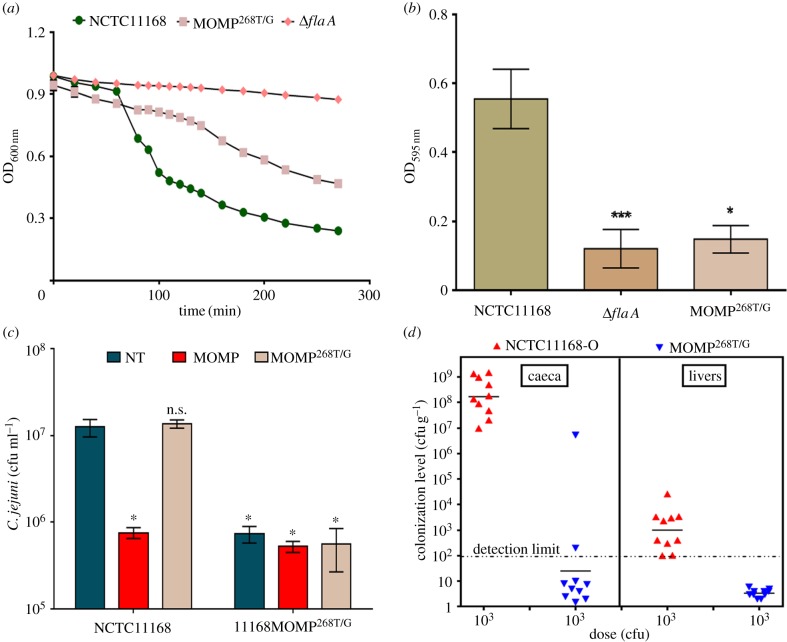Figure 8.
O-glycosylation of MOMP effects auto-agglutination, biofilm formation, adherence to Caco-2 cells and chicken colonization. (a) The ability of 11168MOMP268T/G to auto-agglutination was significantly reduced compared with wild-type 11168 (p < 0.0001). 11168ΔflaA was used as a negative control for aggregation. Error bars (too small to be seen) = mean of triplicate values on three occasions ± s.e.m. (b) Similarly, the ability of 11168MOMP268T/G to form biofilms was significantly reduced compared with wild-type NCTC11168. 11168ΔflaA was used as a negative control for biofilm formation. Error bars = mean of triplicate values on three occasions ± s.e.m. *p < 0.05; ***p < 0.001. (c) Binding of NCTC11168 and 11168MOMP268T/G to Caco-2 cells in the absence of inhibitor (non-treated, NT) or following pre-treatment of Caco-2 cells with purified MOMP or MOMP268T/G. *Significantly reduced compared with the binding of non-treated NCTC11168 (p < 0.05). Error bars: mean of triplicate values ± s.e.m. from three independent experiments. (d) Colonization of chickens by NCTC11168-O and 11168-O MOMP268T/G mutant 7 days post-infection. The geometric mean colonization levels in caeca are significantly reduced (p < 0.0001) and are below the limit of detection (102 cfu g−1) in 8/10 birds inoculated with 11168-O MOMP268T/G. Similarly, levels of 11168-O MOMP268T/G mutant in the liver were below the limit of detection in 10/10 birds 7 days post-infection.

